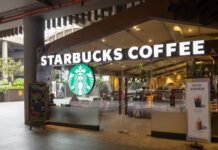
The 9th edition of the Innopack F&B Confex at Gurugram discussed at length the implementation of Artificial Intelligence in food and beverage nutritional measurement and how it can be effective in the field of packaging as well. The emphasis on reducing, reusing, and recycling packaging was made by several panelists who asserted that a ban on single-use plastic is not the solution to any of the pre-existing problems.
The consumer’s lifestyle has changed over the last few years. The demand for packaged food has evolved and increased with ready-to-cook meals, ready-to-eat food packets, and creative packaging. According to the organizers’ India’s packaging industry is expected to grow by about 27% between 2021 and 2026. The role of packaging is therefore both evolving and becoming a more critical differentiator for brands as they scale up and add more value to capture a share of the steadily rising market demand.

The potential of artificial intelligence in the food industry is yet to be fully appreciated. Prabodh Halde, head of regulatory affairs, Marico said, “Whenever we talk about packaging for food and beverages the first ideas I get are banana and coconut. These examples say a lot about how perfect food packaging can be and with the implementation of AI, we can possibly make packaging come closer to these ideals. It will be an evolutionary process that will go hand in hand with the aim to reduce single-use plastic from the equation.
“As an industry, we can expect perfect packaging for food that not only looks good on the surface but will actually preserve the contents inside. Design optimization will also be an area of focus as 21% of waste is comprised of single-use plastic waste such as shampoo and ketchup sachets of Rs 1 – an optimization that we in the food and packaging industry, need to work towards. The alternative method needs to reduce the single-use plastic waste right at the source.”
The growth of the packaging market in India is primarily driven by the food and beverage industries. Increasing investment in the food processing industries and countering the wastage of agri-crops creates scope for the expansion of both food process and packaging. It is now essential that the food and beverage processing and packaging industries embrace innovative methods and raw materials, to reduce the amount of non-recyclable waste generated.
The Indian government guidelines have also emphasized the urgency of reducing waste and moving towards sustainable and recyclable packaging solutions with financial penalties for non-compliance with its February and June 2022 waste management rules. In one of the afternoon sessions on Sustainable Packaging Materials and Technology, Marzban Thanevala, VP of sales and marketing, innovation, and business development at Constantia Flexibles said, “The packaging sphere of our economy will need a thorough revamp, everything we have known and done so far has to be reinvented, to be more sensitive to ecology and to face the challenge of sustainability the time to act is now. Waste collection is also a problem hindering the recycling chain – collection and segregation at the source will definitely propel the industry towards a better route but until strictly adhered to, the reforms are just a fantasy.”
In the coming decade, India will focus on transitioning the packaging industry towards sustainability and smart solutions. The discussion is improving and looking at technologies such as AI not as a threat but as an opportunity since the consumption of packaging in the country is so low compared to that of the ‘advanced’ economies.
IndiFoodBev — authentic, impactful and influential
An English-language food and beverage processing and packaging industry B2B platform in print and web, IndiFoodBev is in its third year of publication. It is said that the Indian food and beverage industries represent approximately US$ 900 billion in revenues which implies more than 20% of the country’s GDP. Eliminating the wastage on the farmside can help to deliver more protein to a higher number of the population apart from generating sizable exports. The savings in soil, seeds, water, fertilizer, energy and ultimately food and nutrition could be the most immense contribution that country is poised to make to the moderation of climate change.
To improve your marketing and grow sales to the food and beverage processing and packaging industry, talk to us. Our research and consulting company IppStar [www.ippstar.org] can assess your potential and addressable markets in light of the competition. We can discuss marketing, communication, and sales strategies for market entry and growth.
Suppliers and service providers with a strategy and budget for targeted marketing can discuss using our hybrid print, web, video, and social media channels to create brand recognition linked to market relevance. Our technical writers are ready to meet you and your customers for content.
The second largest producer of fruit and vegetables in the world is continuously expanding processing capacities and delivery systems with appropriate innovative technologies. We cover product and consumer trends, nutrition, processing, research, equipment and packaging from farm to thali. Get our 2025 media kit and recalibrate your role in this dynamic market. Enhance your visibility and relevance to existing markets and turn potential customers into conversations. Ask for a sample copy of our bi-monthly in print or our weekly IndiFoodBev eZine each Wednesday.
For editorial info@ippgroup.in — for advertisement ads1@ippgroup.in and for subscriptions subscription@ippgroup.in
Naresh Khanna – 10 February 2025
Subscribe Now











